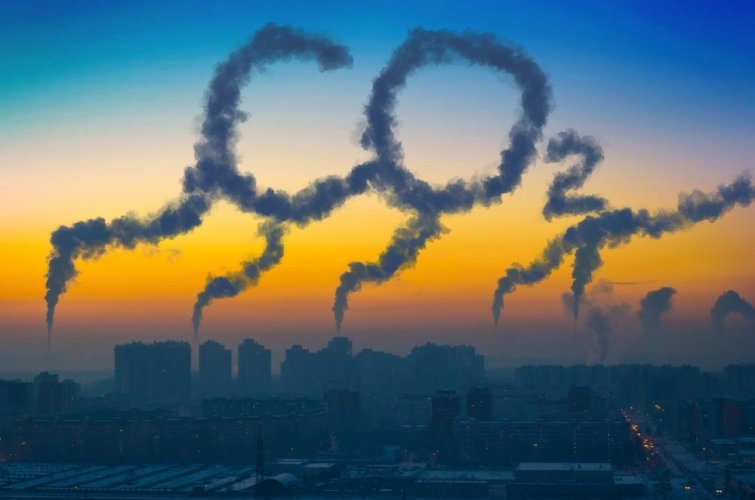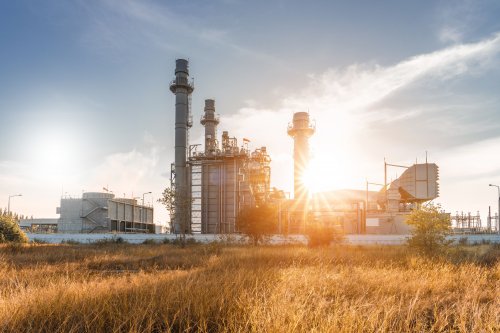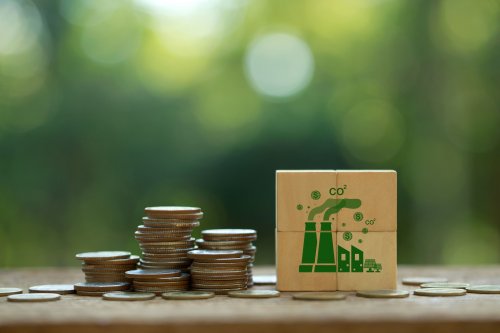GMK Center analyst Andriy Glushchenko has warned that the acceleration of the launch of the emissions trading system (ETS), which is scheduled to be piloted in 2025, increases the risk of future "distortions" in its operation.
A poor-quality ETS may harm the economy, fail to fulfill its functions, or not be recognized by European partners, according to the European Business Association.
ETS will help Ukrainian companies avoid the tax burden of the European Carbon Based Import Adjustment Mechanism (CBAM), which will be paid starting in 2026. The payment of the carbon duty is pushing the Ukrainian government to introduce the ETS as soon as possible.
Glushchenko emphasized that the introduction of the ETS is one of the requirements of the Association Agreement with the EU. The Ministry of Environmental Protection and Natural Resources supports the fulfillment of this requirement and plans to do so:
- in 2024 – to submit to the Verkhovna Rada a draft law on the establishment of STV;
- in 2025 – launch the system in pilot mode;
- in 2026 – to switch to the full operation of this system.
"At first glance, everything looks perfect – Ukraine is moving in line with its European integration course, and the government strongly supports this movement. However, when you start looking into it in more detail, serious questions arise about the realism of the stated ambitions," he said.
The analyst explained that the first phase of the European ETS was launched about 5 years ago and the system was systematically improved. Currently, the EU has 4 phases of the EU ETS, which took 19 years to develop. Although Ukraine can use certain European developments in the ETS, it is impossible to completely copy the system. After all, Ukraine and the EU are at different stages of development, and the economy needs time to adapt to European requirements.
Glushchenko noted that the launch of the Ukrainian ETS, which from the first stage would be as close as possible to the current EU ETS, requires taking into account critical issues, in particular:
- what is the scope of coverage (types of economic activity, types of greenhouse gases);
- how to set the upper limit of emissions in the system – at pre-war or current levels;
- which rules for the distribution of quotas in ETS will apply;
- which platform will be the organizer of auctions on the primary and secondary market of greenhouse quotas;
- who will be the regulator of ETS in Ukraine;
- who will perform administrative functions in ETS, in particular regarding the ETS;
- whether the FTA will include mechanisms for government interventions to influence quota prices.
In his opinion, some of these issues require serious justification, such as taking into account emissions from enterprises in the occupied territories, adjusting the emissions cap after the de-occupation of these territories, etc.
He explained that the EU ETS allocates part of the allowances free of charge based on benchmarks, i.e. emissions from the most efficient plants in the industry. This approach is considered the most progressive, as it encourages companies to reduce emissions. However, the question arises as to how to calculate these benchmarks for Ukraine, in particular, whether there is a sufficient number of efficient plants in each industry and whether it is possible to introduce correction factors to the European benchmarks.
Glushchenko emphasized that the EU collected data in two phases in 2005-2012 to substantiate some elements of the ETS, while implementing a system of monitoring, reporting and verification of emissions (MRV). Although Ukraine launched its own MRV in 2021, it failed to obtain the first verified carbon emissions data in 2022.
"As of now, the MIA system does not work as it should, and we do not have complete data on emissions, and this data is very important for substantiating the design elements of the Ukrainian STP. To collect a sufficient amount of data, in our opinion, at least 3 years of full-time work of the Ministry of Foreign Affairs are needed," he said.
The analyst added that in addition to substantiating the parameters of ETS, it is necessary to coordinate them among themselves and implement them in the relevant legal acts – this work also takes time. In Ukraine, there are also not enough specialists who could potentially support and administer the work of ETS. To train personnel, it is necessary to have approved rules for the work of ETS, and they are currently only being worked out.
"The construction of the Ukrainian ETS is a long-term phased process, which should be based on the roadmap for the harmonization of the Ukrainian ETS with the EU ETS. Only under such a condition can we construct such a STU that will really contribute to the European integration of Ukraine and the achievement of our climate goals," Glushchenko emphasized.
Let us remind you, Minister of Environmental Protection and Natural Resources Ruslan Strilets once again stated that in Ukraine in 2025, the ETS (emissions trading system) will be launched in test mode, and in 2026 – in full-fledged mode. However, in the eco-community, such terms are considered unrealistic.
Previously, EcoPolitic spoke with the coordinator of the Industrial Ecology and Sustainable Development Committee of the European Business Association, Olga Boyko, about whether Ukraine is ready for the launch of ETS both legislatively and realistically.





